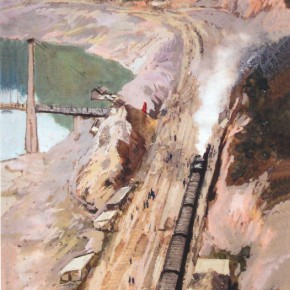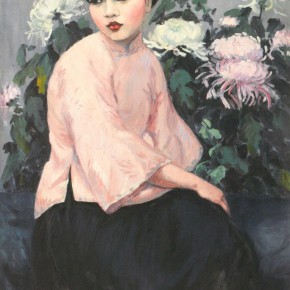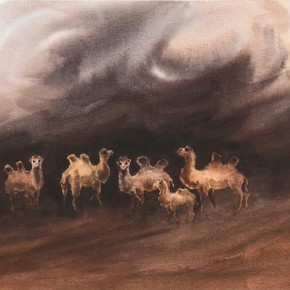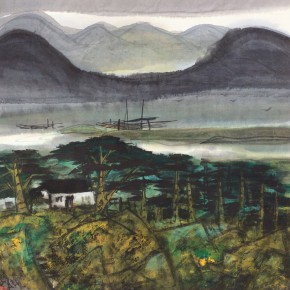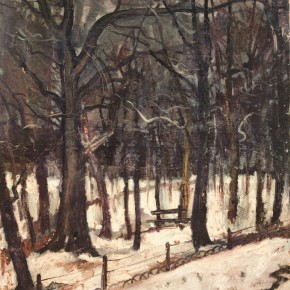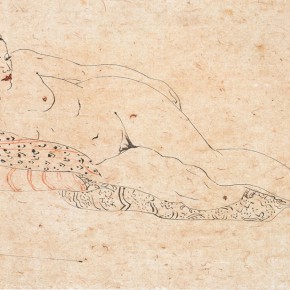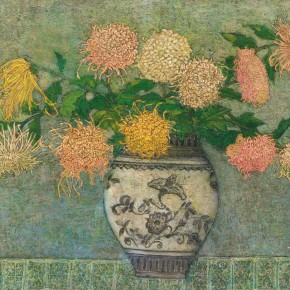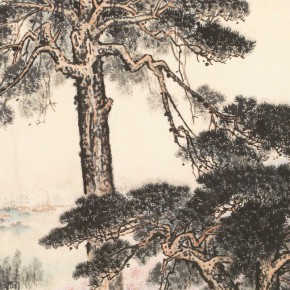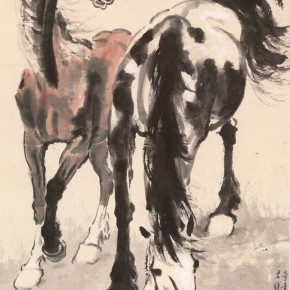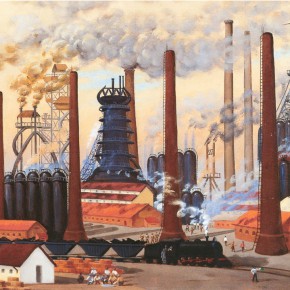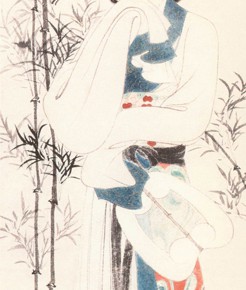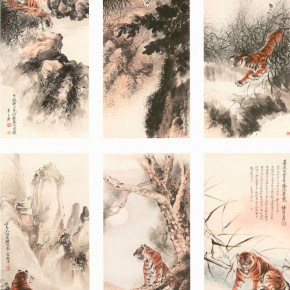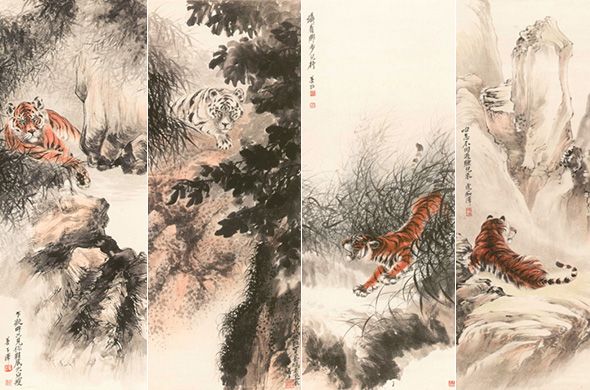
Within different historical contexts, giving reference to content and chosen value, as well as the newly generated content and value of Chinese painting and Western painting which has profoundly changed due to the dramatic changes in China since the mid-19th century which were ongoing. During the past 170 years, the name of Chinese painting has evolved because of both the historical changes and different value orientations, such as “Chinese Painting” (from the Dynasties of Ming and Qing to the Republic of China), “Study of Chinese Painting” (early Republic of China), “National Painting” (in the 1920s-1930s), “New National Painting” and “Modern National Painting” (in the 1930s-1940s), “New Chinese Painting”, “Colored Ink Painting” (in the early and middle 1950s), “Chinese Painting” (it was officially confirmed in 1957), “Neo-Literati Painting”, “Experimental Ink”, “Modern Ink”, “Traditional Art” (in the 1980s and 1990s), etc., which were the keywords of the evolution. Western Painting evolved from lot of terms such as “Western Painting”, “Foreign Painting” (including the painting imported from Japan), “Oil Painting”, “Modern Art”. It can be said that from this perspective, whether Chinese painting or Western painting, they constantly shaped their own appearance through the dynamic history of China, rather than being static. It can be confirmed by Chinese painting and Western painting in modern China of the Long Museum’s collection, which reflects diverse historical appearances.
In fact, when Chinese painting and Western painting were commonly used and widely accepted by people during the mid-1930s, oil painting referred to Western painting (art schools set up departments of Chinese painting and oil painting instead of the previous departments of Chinese painting and Western painting), among which the art genres and concepts from Europeanneoclassicismin the 19th century to post-impressionism were the focus and talked about and imitated by Chinese Western painters, while Chinese painting at that time didn’t mean the notion of “Chinese painting” separated from foreign painting (including Japanese and Western paintings), as early as the end of the 1910s to the early 1920s - it focused on the reference and promotion of the brush and ink painting as well as the value of the literati painting which was formed from the Dynasties of Song and Yuan, especially after the end of the May Fourth Movement, when cleaning up national cultural heritage and the establishment of the national government arose, which further created a context to regard literati painting and its tradition and valued as the quintessential within the context of Chinese painting. On the other hand, using the approach of foreign painting, it practiced the integration of Western and Chinese paintings to improve the so-called “extremely decayed” Chinese painting, so that “New National Painting”, “Modern National Painting gradually arose from the historic moment of the 1930s and the 1940s.
The most fundamental social and cultural reasons as to why a mix of Chinese and Western paintings appeared in modern China are: on the one hand, duringthe 50 yearsof the Opium War, Western painting art – classical painting art and the concept – after the imperialist colonial aggression boomed on the door of China it went along with capitalism to penetrate into the emerging cultural and artistic production chain through the coastal cities of China, the illustrations, pictorials, exported paintings and calendars which carried or integrated classical Western realistic concepts which had a bigger visional impact than the integration of the Western and Chinese paintings as conducted by the court missionaries in the previous 100 to 200 years; on the other hand, it was more important that, strongly stimulated by imperialist powers setting off waves of crazy aggression and partition in China since the Opium War, the provincial chiefs both the inside and outside of the Qing Dynasty, elite and literati had a historical change in their attitude to Western civilization of the time, which shifted to consciously learning about Western civilization, the ideas and methods of which were taken as weapons. Dissection of various tangling and suffering of Chinese civilization over thousands of years in order to save the nation, eventually it converged with the unrest in the period of May Fourth New Culture Movement, exacerbating the mutation of Chinese modernity on a more in-depth level. Not only did it profoundly drive the painting circles of the country to follow, select and transform the Western classical paintings as well as the occurring modern painting art and conceptsof the twentieth century, but it profoundly provoked an argument on attitude and direction we should chose for study and value of Chinese painting representing Chinese painting over one hundred of years. Some people adhered to and prompted the tradition of Chinese painting, some tried to improve the integration of the Chinese and Western, and even some overthrown and deconstructed it and started from scratch. The Chinese and Western paintings by modern Chinese painters in the collections of the Long Museum provided such a case - the Kaleidoscope that refracts the situation of Modern Chinese art.
The emergence of Chinese and Western paintings and the tracking of the conceptual evolution have been puzzling since the 19th century, so that we can’t separately and simply talk about one of them. Therefore, as a part of “Re-View—Opening Exhibition of Long Museum West Bund”, the section of “Chinese Paintings • Western Paintings” refuses to divide the collection of the Long Museum into two parts to present a dual contradiction between Chinese and Western paintings, and the relationship between them is complicated, so that we hope to see the juxtaposition that traces Chinese and Western paintings as left in modern China, in a more relevant public framework, to enjoy the ideas of Chinese and Western paintings as presented in the works in different periods at a consistent time axis.
After comprehensively considering the representative painters, and the expressive tension of paintings, more than 150 sets of works are selected to constitute the three units in the section of “Chinese Paintings • Western Paintings” of the opening exhibition – “Landscape”, “Still Life”, “Portrait”, and attempting to explore conceptual changes of Chinese and Western paintings in modern China from the following free perspectives: Firstly, mimicking the landscape • creating the realm – applying nature as the medium to express visual reality or painting reality, a total of 69 setsof works are on display at the unit on landscape, part of them are sketches of landscape, with the heritage of the artistic traditions, concepts and styles from Neoclassicism to Post-Impressionism in the history of Western painting, and generated a Chinese appeal and feeling related to the local conditions, such as landscape paintings by Wang Yachen, Guan Zilan, Liu Haisu, Li Tiefu, Chen Qiucao, Qiu Di, Li Zongjin, Sha Qi, Yu Ben, Wu Zuoren, Wang Jiyuan, Xu Xingzi, Yan Wenliang, and Lv Sibai; another part is mainly the arrangement of “landscape”, inheriting traditions, concepts and styles of the painting study in the Dynasties of Song, Yuan, Ming and Qing, and keeping up with the times to construct emerging forms and values of the brush and ink, such as the landscape paintings by He Tianjian, Zheng Wuchang, Zhang Daqian, Wu Hufan, Pu Hsin-yu, Huang Junbi, Huang Binhong, and Lu Yanshao. In between the self-discipline or autonomously extended practices of Western and Chinese artistic concepts, there was an art practice grafting an integration or conciliatory of different concepts in varying degrees, which resulted in harmonizing various contradictions between landscape and realm as preformed in different painters’ works, such as the works by Xu Beihong, Guan Liang, Lin Fengmian, Li Keran, Qian Songyan, Wu Guanzhong, Su Tianci, Zhu Ying and Li Qingping. Secondly, portraying the appearance • create the image – use of the first-person and third-person narrations to express the objects of ancient and present people and gods, about 44 sets of collections are on display in portrait section, to showcase different concepts and laws in the performance of people in Chinese and Western painting arts. It uses first-person narration in the history of Chinese painting, which focuses on the subjective creation of “images”; third-person narration is used in the history of Western painting, which focuses on objectively portraying the appearance. It is meaningful that since the 20th century, Western modern artistic mainstream increasingly escapes from the objective performance of reality, which is reflected in the images constructed by Wu Dayu, but in modern China, art was increasingly demanded to shoulder the mission to “enlighten and morally educate people” again, in order to “save the nation” and “serve the people”, increasingly focusing on third-person narration which was closely related to objective reality – the concept and rule of portrait, but it was gradually transformed into the Chinese cultural first-person narrative mainstream in the 20th century. Thirdly, describe the object • describe via the object – taking flowers, birds, insects and pests as the carriers to express personal emotion and reflect personality. There are 39 sets of collections on display in the section of Still Life.
In this complex situation, neither displaying the so-called history of and the relationship between “Chinese painting and Western painting”, nor revealing a unique or mixed state of Chinese and Western painting artistic concepts performed in the work, it focuses on declaring whose painting reveals the result of the self-discipline evolution of an existing artistic concept in the 20th century, which painters use the basis of “the first changing situation ever over the 3000 years” to consciously choose a position, and then extend the concept and develop the value. We take this opportunity to express the view: in the developing situation of Chinese modern art, only the exploring practitioner who is conscious to the pain in the changing situation, and is conscious to think of it in comparison and select a way and approach is a modern Chinese artist!
– Written by Cao Qinghui for the section of “Chinese Paintings • Western Paintings” of the “Re-View —Opening Exhibition of the Long Museum West Bund”
Translated by Chen Peihua and edited by Sue/CAFA ART INFO.


